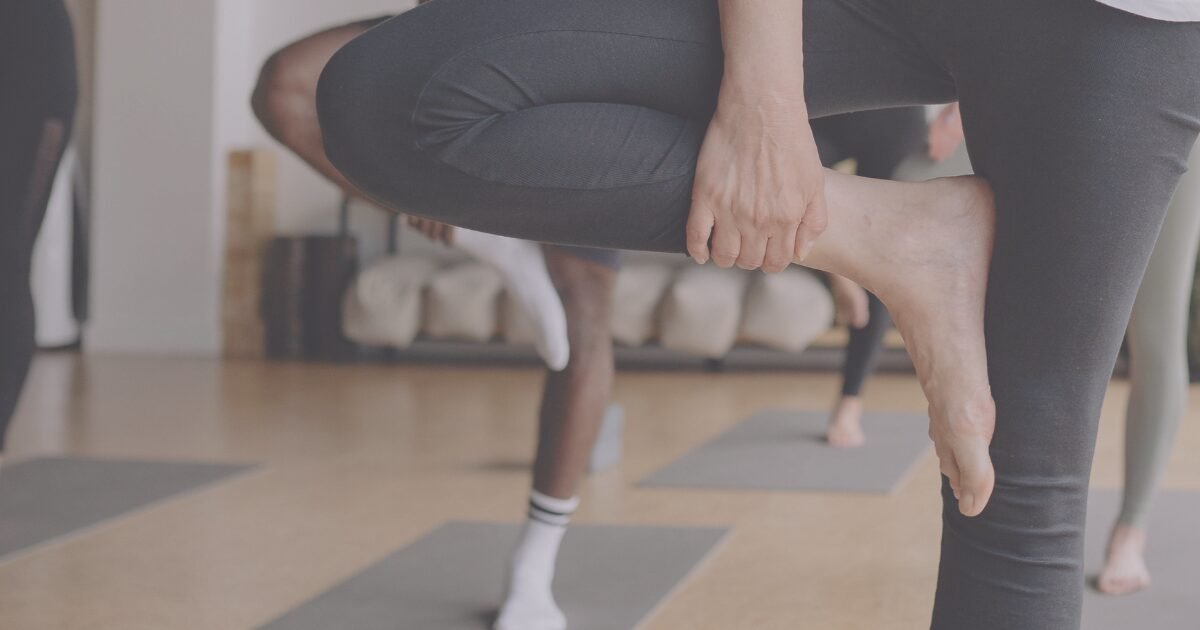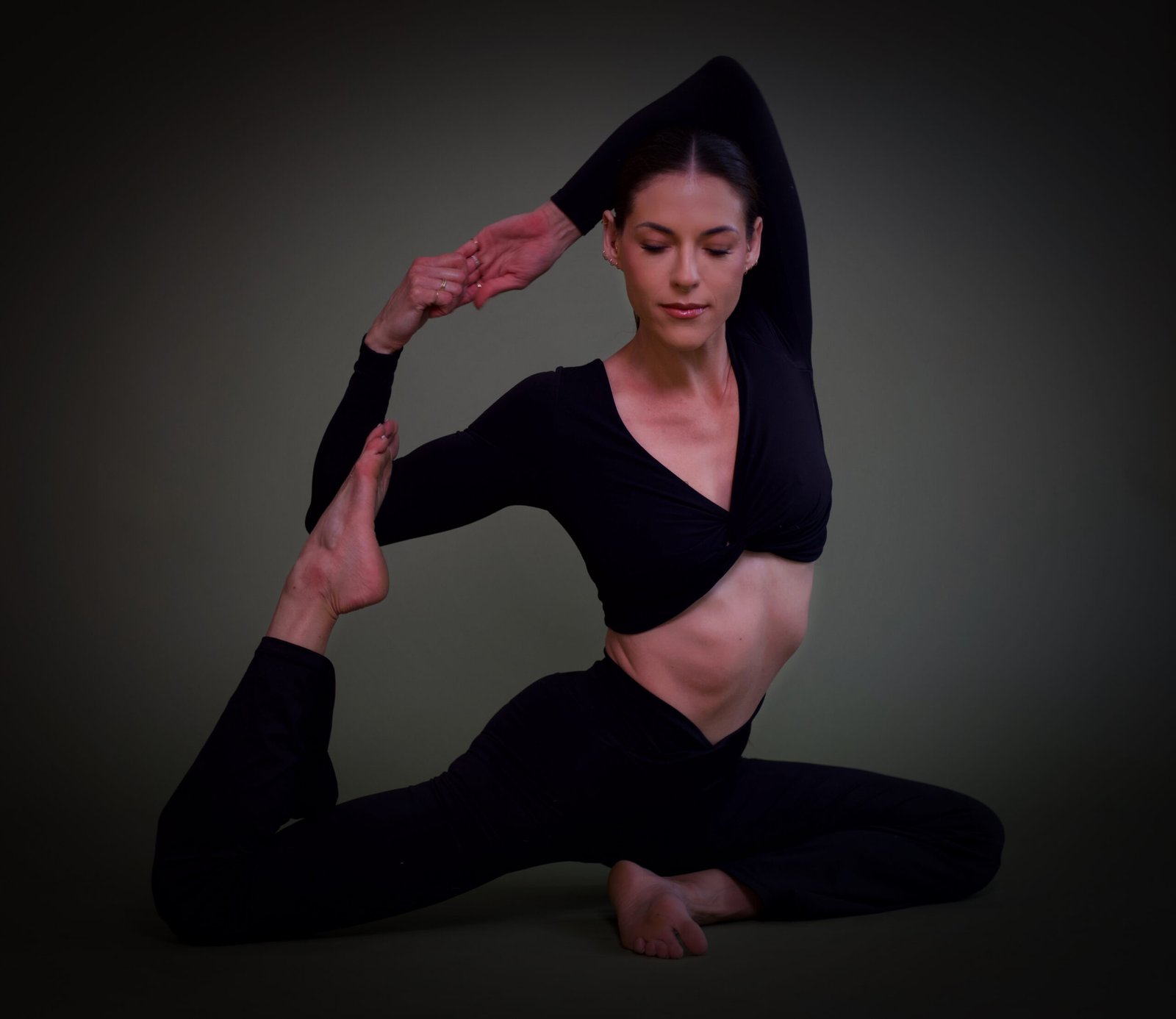
Hatha Yoga
A balanced practice combining physical postures, breathwork, and meditation for strength, flexibility, and inner peace.

Overview
- STYLE | Broad umbrella term, generally slower and more static
- STRUCTURE | Postures (asanas), breathwork (pranayama), sometimes meditation
- BREATH | Emphasis on controlled, deep breathing but not as specific as Ashtanga
- FLOW | No set sequence; postures are held for longer periods
- PACE | Slow to moderate, focused on alignment and mind-body awareness
- FOCUS | Balance between strength and flexibility with emphasis on breath and presence
- TEACHER ROLE | More instructional and gentle guidance
- VIBE | Accessible, beginner-friendly, and often restorative or foundational
What is Hatha Yoga?
Hatha Yoga is one of the most widely practiced and well-recognized styles of yoga in the world today. It is both a historical root of many modern yoga styles and a broad, flexible approach that invites practitioners of all levels to explore the profound connection between body, breath, and mind.
Unlike faster-paced styles, Hatha Yoga emphasizes holding poses with awareness, refining alignment, and cultivating presence. It is the root from which most modern yoga styles have evolved, including Vinyasa, Power, and Iyengar Yoga.
Hatha Yoga is perfect for beginners yet endlessly deep for experienced practitioners — a timeless practice that honors tradition while remaining accessible to all.

The Meaning and Origins of Hatha Yoga
The word Hatha is derived from Sanskrit, where "ha" means "sun" and "tha" means "moon." Together, the term symbolizes the union of opposites—masculine and feminine, active and receptive, strength and surrender.
Historically, Hatha Yoga emerged as a system of physical techniques designed to support the deeper practices of meditation and spiritual awakening. Its roots can be traced back to ancient texts like the Hatha Yoga Pradipika (15th century), which outlined a system of postures (asanas), breath control (pranayama), cleansing practices (kriyas), and energy work.
Over time, Hatha Yoga evolved and branched into many styles and approaches. Today, it serves both as a foundational practice for beginners and as a deeply restorative or therapeutic style for more advanced yogis.
Read the Hatha Yoga Pradipika: Access the Complete Text
Style and Structure
Style
Hatha Yoga is a broad umbrella term that refers to a physical yoga practice that generally emphasizes slower, more deliberate movements compared to faster, more dynamic styles like Vinyasa or Ashtanga Yoga.
It is a practice rooted in stability and presence, inviting practitioners to explore postures with a focus on alignment, breath awareness, and conscious relaxation.
Structure of a Typical Hatha Class
- Opening meditation or centering – to ground and set intention
- Pranayama (breathwork) – controlled, intentional breathing practices
- Warm-up poses – to gently mobilize the spine and joints
- Standing poses – for strength, balance, and grounding
- Seated poses – for flexibility and introspection
- Gentle backbends and twists – to open the body
- Cool-down and Savasana – for integration and deep relaxation
Breath and Flow
Breath
Breath is an essential pillar of Hatha Yoga. While not as prescriptive as Ashtanga Yoga's Ujjayi breath, Hatha Yoga encourages deep, controlled, and mindful breathing throughout the practice.
Breath serves multiple purposes:
- It fosters presence, anchoring the mind in the here and now
- It promotes relaxation and activation of the parasympathetic nervous system
- It supports energy regulation, helping practitioners cultivate prana (life force)
Flow
Hatha Yoga does not follow a rigid sequence of poses. Unlike styles such as Ashtanga or Bikram Yoga, there is no predetermined order. Teachers have the flexibility to design a practice based on the needs of the students.
This allows postures to be held for longer periods—often 3–5 breaths or more—giving students time to explore alignment, sensations, and breath awareness. The practice encourages depth over speed, inviting a meditative quality to each pose.
Pace, Focus, and Teacher Role
Pace
The pace of Hatha Yoga is generally slow to moderate. It is not intended to be a "workout" style of yoga, but rather a mindful exploration of body and breath.
Focus
The primary focus of Hatha Yoga is the balance between strength and flexibility, with an underlying emphasis on breath and present-moment awareness.
Practitioners develop:
- Physical strength and stability – through holding poses
- Flexibility and mobility – through deep, sustained stretches
- Mindful presence – through the conscious connection of breath and body
- Emotional and mental clarity – through slowing down and cultivating inner stillness
Teacher Role
Teachers in Hatha Yoga classes typically adopt an instructional and supportive role. They provide clear alignment cues, offer hands-on or verbal adjustments, and encourage students to listen to their own bodies.
Vibe and Accessibility
One of the most beautiful qualities of Hatha Yoga is its accessibility:
- It is beginner-friendly, welcoming those who are new to yoga
- It is inclusive, accommodating various body types, ages, and fitness levels
- It is often restorative and foundational, providing a grounding practice

Benefits of Hatha Yoga
Holistic well-being on every level
Increased Flexibility & Mobility
Deep, sustained stretches release tight muscles and improve joint range of motion throughout the body.
Improved Strength & Endurance
Holding poses builds functional strength and muscular endurance through consistent practice.
Better Posture & Alignment
Focused attention on proper alignment corrects postural imbalances and prevents injury.
Stress & Anxiety Reduction
Slow, mindful movement and breathwork activate the parasympathetic nervous system.
Enhanced Mental Clarity
Mind-body connection cultivates focus, presence, and improved concentration.
Better Balance & Coordination
Standing poses and balance work improve proprioception and physical stability.
Discover all 12 transformative benefits of Hatha Yoga
Explore All 12 Benefits →Complete Benefits Overview
Physical Benefits
- Increased flexibility and joint mobility
- Improved posture and alignment
- Enhanced strength and muscular endurance
- Greater balance and coordination
- Improved respiratory function through breathwork
- Stimulation of circulation and lymphatic flow
Mental and Emotional Benefits
- Reduction of stress and anxiety
- Enhanced emotional resilience
- Improved concentration and mental clarity
- Increased body awareness and self-acceptance
- Cultivation of mindfulness and present-moment awareness
Energetic and Subtle Benefits
- Balance of the body's energy systems (chakras and nadis)
- Greater vitality and sense of inner harmony
- Preparation for deeper meditation and spiritual exploration
Who Is Hatha Yoga For?
One of Hatha Yoga's greatest strengths is its adaptability. Ideal for:
Beginners
Those looking to start a yoga practice in a supportive, non-intimidating environment.
Older Adults
Those seeking a practice that supports joint health, balance, and vitality.
Athletes
Those wanting to improve flexibility, reduce injury risk, and cultivate mindfulness.
Busy Professionals
Those needing stress relief and a physical "reset."
Advanced Yogis
Those wanting to refine their alignment, breathwork, and inner awareness.
Whether used as a standalone practice or as a complement to other forms of movement, Hatha Yoga offers a timeless and invaluable pathway to well-being.
Conclusion
At its heart, Hatha Yoga is a practice of balance—between strength and flexibility, activity and rest, effort and ease. It invites us to slow down, breathe deeply, and connect with ourselves on every level.
Far from being "just stretching," Hatha Yoga provides a profound opportunity for self-exploration and inner transformation. It is a living tradition that honors the wisdom of the body, the intelligence of the breath, and the boundless potential of conscious awareness.
Whether you are stepping onto the mat for the first time or returning after years of practice, Hatha Yoga offers an open invitation: to move, to breathe, to be.
Explore Related Yoga Styles
If you enjoy the steady, foundational pace of Hatha but wish to refine alignment further, Iyengar Yoga offers precision and structure. If you are ready to add more heat and dynamism, the flowing sequences of Vinyasa or the disciplined path of Ashtanga may call to you. For deep rest and renewal, Restorative Yoga provides a gentle, nurturing practice.

About Lisa Marie
Lifelong yoga student and teacher, dedicated to exploring and sharing the ancient spiritual tradition of yoga. Lisa Marie brings over 15 years of experience in various yoga styles, with a special passion for helping students discover the practice that resonates with their unique journey.
Share This Article
Find Hatha Yoga Near You
Top-rated studios and classes in your area

Serene Hatha Yoga Studio
Welcoming studio offering gentle, foundational Hatha classes for all levels with expert instruction.
View Studio
Community Hatha Classes
Inclusive, beginner-friendly Hatha practice in a warm, supportive environment.
View Studio
Foundation Yoga Center
Traditional Hatha yoga practice emphasizing alignment, breathwork, and meditation.
View StudioReady to Begin Your Hatha Yoga Practice?
Find experienced Hatha Yoga teachers and studios near you. Explore classes at your pace, read reviews, and start your journey toward balance, strength, and inner peace.
Find Classes Near You